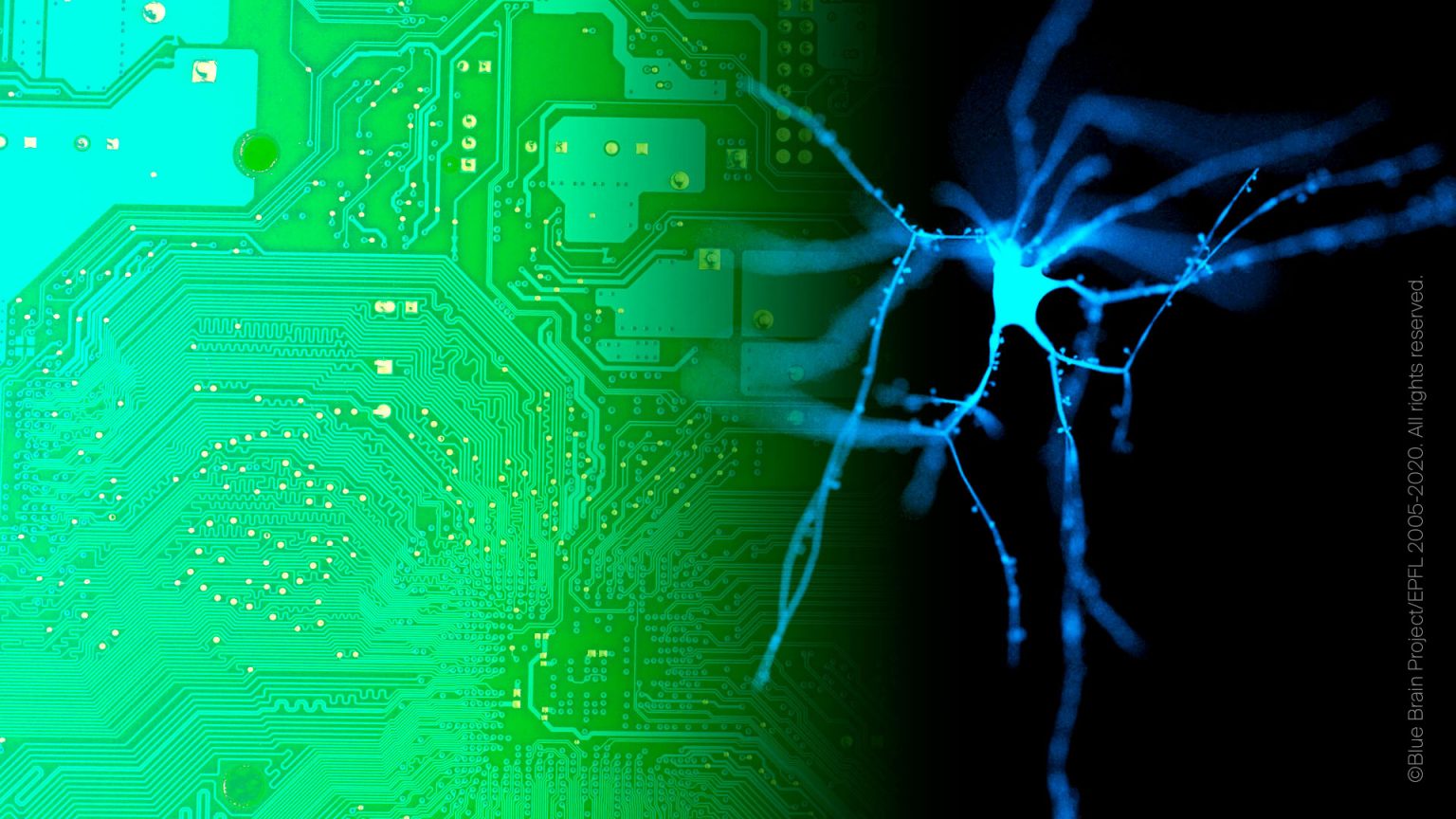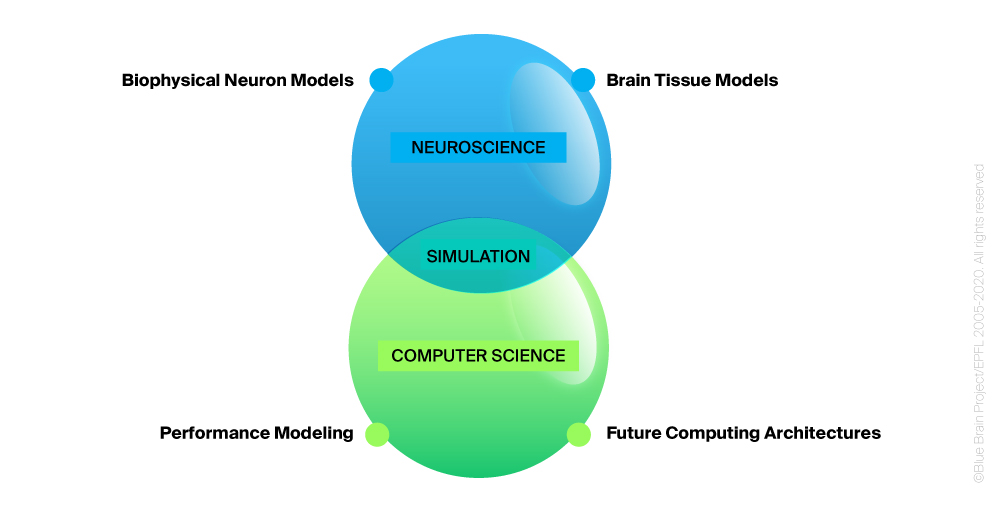Neuroscience and Computing

Our Research
Computing is one of the most fundamental inventions of mankind; it has dramatically transformed the world we live in and remains one of the most impactful technological drivers influencing almost every field of science, engineering and general life…and also neuroscience. Our research takes place at the interface of computing and neuroscience.

Computing for Neuroscience:
This line of research is focussed on bringing the toolbox of computational science to neuroscience. For example, in tight collaboration with the EPFL Blue Brain Project, we develop effective methods for the building of biophysically detailed neuronal models and brain tissue models, which push the boundaries of numerical methods and simulation schemes, making it possible to use massively parallel supercomputers efficiently for neuroscience. Furthermore, our research looks several years ahead to innovate in our ability to simulate brain tissue and we use analytical performance modelling to understand the limits and opportunities of computing for brain science.
Neuroscience for Computing:
With the challenges of Moore’s law becoming more and more apparent, it will become more difficult to continue to increase computing performance in the future. This requires to tailor computing more specifically for the application, necessitating deep insight of the computational essence of the application and opportunities in computer architecture. It also offers the opportunity to take the brain as inspiration for future computer architectures. We use our insight on the brain and understanding of the computational needs to promote the use of neuromorphic computing elements as a means to complement computing in the future.
Research Interests
Computational brain science, advanced methods for simulation including analytical performance modeling and software innovation for high performance, emerging computing architectures.